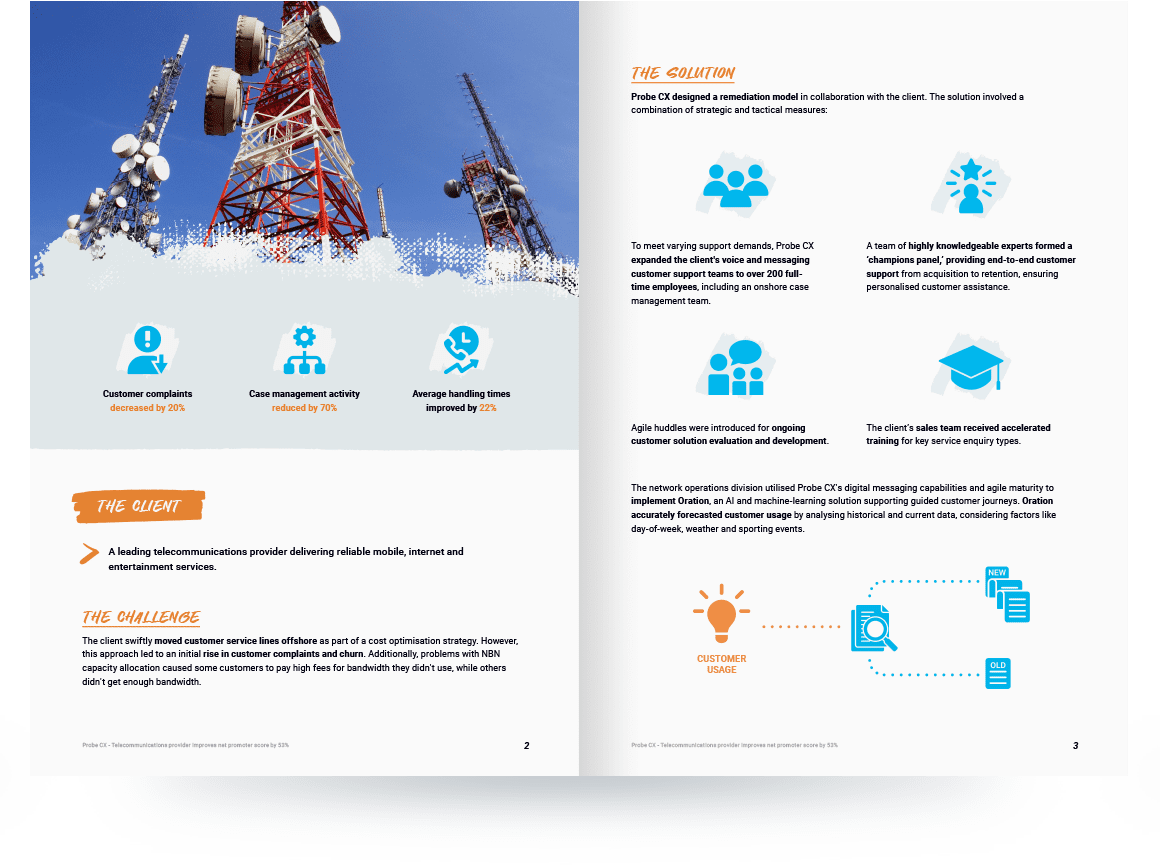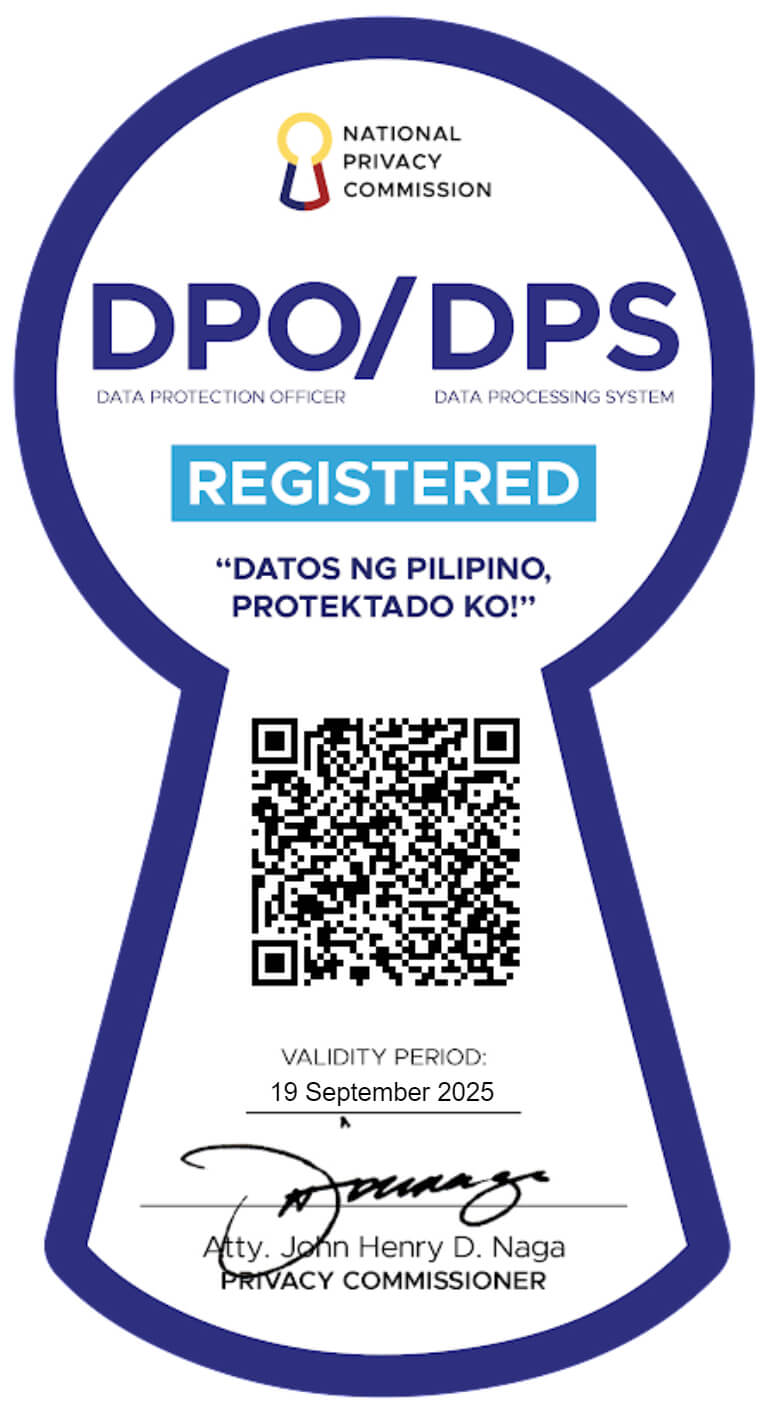Incorporating omnichannel and AI-powered systems
Quas sonet maiestatis ex vel, et his blandit interesset, at usu labore vivendo dignissim. Ius iisque platonem id, possit tritani corpora at duo.

Experiencing a rise in customer complaints and churn? Are customer support channels unable to satisfy customer demands?

In this case study discover how a customer remediation model:
- Decreased customer complaints by 20%
- Reduced case management activity by 70%
- Improved average handling times by 22%
- Increase net promoter score (NPS) by 53%
- Reduced customer transfer rates by 83%
- Exceeded sales performance targets by up to 103%.
Download now for these insights and more.
Energy provider increases contact center capacity by 463% with AI platforms and a flexible staffing model
463%
increase in contact center capacity66%
of calls completed using self-service capabilities24/7
contact center capabilities to meet overflow demandsThe client
A wholesale energy delivery provider for electricity and gas networks.
The challenge
During a major weather event, over 200,000 of the client’s customers lost power due to electricity infrastructure damage, with some outages lasting several weeks. The extended disruptions created a customer experience bottleneck as the client’s contact center became overwhelmed with very high call volumes.
The client’s in-house contact center team were working long shifts with limited flexibility to scale and manage such high call volumes. This placed additional pressure on the team and resulted in extended response times for customers.
The contact center’s interactive voice response (IVR) system could only handle 160 concurrent calls. At the peak of the event, the contact center was receiving 160 calls per minute. These high volumes meant customers faced busy signals and long queue waits. Those who did make it into the queue were met with the traditional dual-tone multi-frequency (DTMF) menu. This provided limited self-service capabilities and basic text-to-speech voice quality.
There was also no ability for callers to get updates on outage information during call queues. For customers who were able to reach an agent, frustrations were high after lengthy wait times.

The sustained high call volumes and lack of timely information led to widespread negative media coverage over the response to the outages. After the dust had settled a regulatory inquiry by the government was prompted.
Recognizing that their systems and processes were unable to respond robustly during large-scale outage events, the client sought a CX-focused partner to overhaul their contact center infrastructure and staffing model.
The solution
The client approached Probe CX to help improve their fault and emergency response capabilities, as well as their general inquiry customer service line.
Incorporating omnichannel and AI-powered systems
Probe CX introduced two contact center infrastructure systems as overlays to their existing tech: Genesys Cloud and Oration by Convai. Both of these solutions are cloud-powered, meaning they could automatically scale up or down to meet shifting call volumes.
Oration, a SaaS conversational artificial intelligence (AI) speech engine, was seamlessly implemented into their existing contact center infrastructure. Its intuitive IVR capabilities could easily identify variations of key caller intents like “the power is out in {suburb_name}” and relay accurate responses over the phone; without the need for an agent.
Genesys Cloud introduced omnichannel capabilities between Oration and the client’s outage management system. It was able to update callers already on hold with any changes to outages that related to their suburbs. This connection meant Oration could provide callers, during the calls, with estimated restoration times for identified outage addresses while also offering self-service options to text callers a link to see outage details on the client’s website.
Genesys Cloud also generated real-time insights into emerging call drivers through its caller sentiment analysis capabilities. This meant contact centers could update Oration’s voice prompts to address issues as they arose.

Employing a flexible staffing model for proactive surge response
Probe CX employed a flexible staffing model to support the technology. They maintained a pool of 18 permanent, full-time fault and emergency response team members as well as shift supervisors and casual agents that could quickly support a ramp-up during surge events. Rather than static schedules, Probe CX took a dynamic approach, proactively onboarding and training additional casual staff in anticipation of forecasted severe weather. This flexible model allowed Probe CX to scale staffing as needed.
The result
When a severe weather event struck a few months after implementing the above solutions, Probe CX demonstrated its capabilities in handling significant call volumes and providing valuable operational insights. Key results included:
Robust scalability and self-service
- At the peak of the weather event, call attempt rates spiked at 600 per minute (10 calls per second) with more than 725 calls in the queue at its height with more than 250,000 properties impacted.
○ The cloud platform was able to handle 900 concurrent calls, a 463% increase in call platform capacity versus their legacy system.
- A couple of weeks later, a large-scale short-duration outage occurred, lasting only 10 minutes. Within this time, the system handled over 1,600 incoming calls.
○ Of those initial 1,600 calls, 66% were successfully self-served by callers using Oration to obtain updated outage information automatically.
Seamless caller experience
- Despite extremely high volumes, there were no system failures or instability issues.
- Callers already on hold received automatic updates via Oration if estimated restoration times changed while they were waiting in the queue.
Real-time operational insights
- The Genesys Cloud platform’s automated sentiment analysis categorized calls into topics like the government’s outage payment program versus general complaints.
- The analysis showed that 70% of customer calls regarding the payment program had a positive to neutral sentiment, suggesting satisfaction with reimbursement options.
- However, 70% of calls related to outage complaints had a negative sentiment, indicating significant frustration among customers.
- Getting these insights in real-time allowed the client to tailor their messaging and prioritize responses for different call drivers based on the perceived customer state.
Flexible staffing scalability
- Within the first two days, to rapidly reinforce the 18 full-time fault and emergency staff, Probe CX supplemented them with an additional 25 casual staff to keep up with the intense spike in calls.
- At its peak, Probe CX deployed 50 staff across 24/7 rotating shifts to maintain queue times as low as practical.
- They demonstrated cross-training agility by reassigning new hires (from training) originally meant for general inquiries to take fault calls during the surge event.
Ongoing support
- Post-event, 18 of the casual surge staff transitioned into a storm support team.
- This team assisted the client in efficiently working through the backlog of customer follow-ups stemming from the prolonged outage.
- Their support ensured customers continued receiving timely responses even after power restoration.
Probe CX was able to dynamically scale resources aligned with increased demand, apply AI-driven insights to optimize responses and maintain a seamless customer experience. The client has since been able to provide an elevated service experience comparative to their previous contact center infrastructure.

